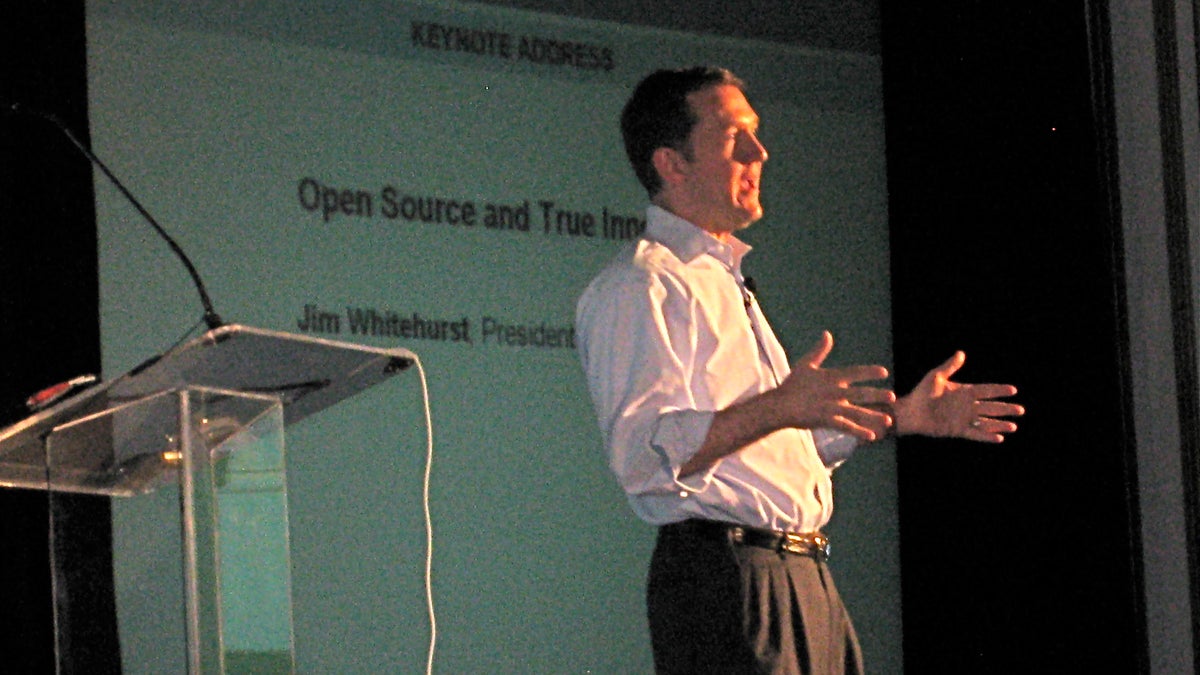OSBC Report: Jim Whitehurst and the "fundamental good" of open source
Open source is not easy to monetize, but it's good for customers and has been for open source, argues Jim Whitehurst.

Last year's Open Source Business Conference (OSBC) was opened up by Red Hat's then CEO, Matthew Szulik. This year we're hearing from Red Hat's new CEO, Jim Whitehurst. Jim is very different from Matthew, but there are some similarities.
Two components of the power of the open-source model that I didn't originally recognize:
- Public policy value of open source, especially outside the US.
- You don't have any barrier or property or scarcity, which makes it tough to make money. But from the customer's point of view, this means that you're having to earn your renewal every single day of the contract.
On the first point:
Outside the United States, open source is...actually seen from a public-policy perspective as a fundamental good.
It's not just about low-cost software. From a public policy perspective, sending back billions and billions of dollars in intellectual property taxes to the US is not a good thing. Yes, Red Hat is based in the US, but we don't sell bits. We sell subscriptions to services, and those are local.
On the second point:
As a career path, Red Hat hires into its support organization. If you're good enough, you become a developer. We've been rated number one in value four years in a row, but that's because we put such a premium on customer support.
The flipside of this is that it makes it really, really hard to make money in open source. At Red Hat, we cast a pretty wide shadow: We have thousands of customers and 80 percent (plus) share of the commercial Linux market. Yet my IT budget at Delta is bigger than the total revenues of Red Hat.
That said, there are only two public software companies with greater than 20 percent revenue growth and margins: Red Hat and VMware. We have been able to deliver superior financial performance than any of our proprietary competition has.
But all is not rosy in Camelot. As Jim indicated, "Red Hat does a lousy job of bringing our customers into the open-source community." Jim noted that most software is developed for use, not for sale, which means that enterprises reinvent the software wheel on a daily basis.
Jim wants to see more software co-developed with customers, rather than exclusively by corporations and others already within open-source development communities. He indicated that Red Hat will take a central role in promoting open-source development within the enterprise ranks.